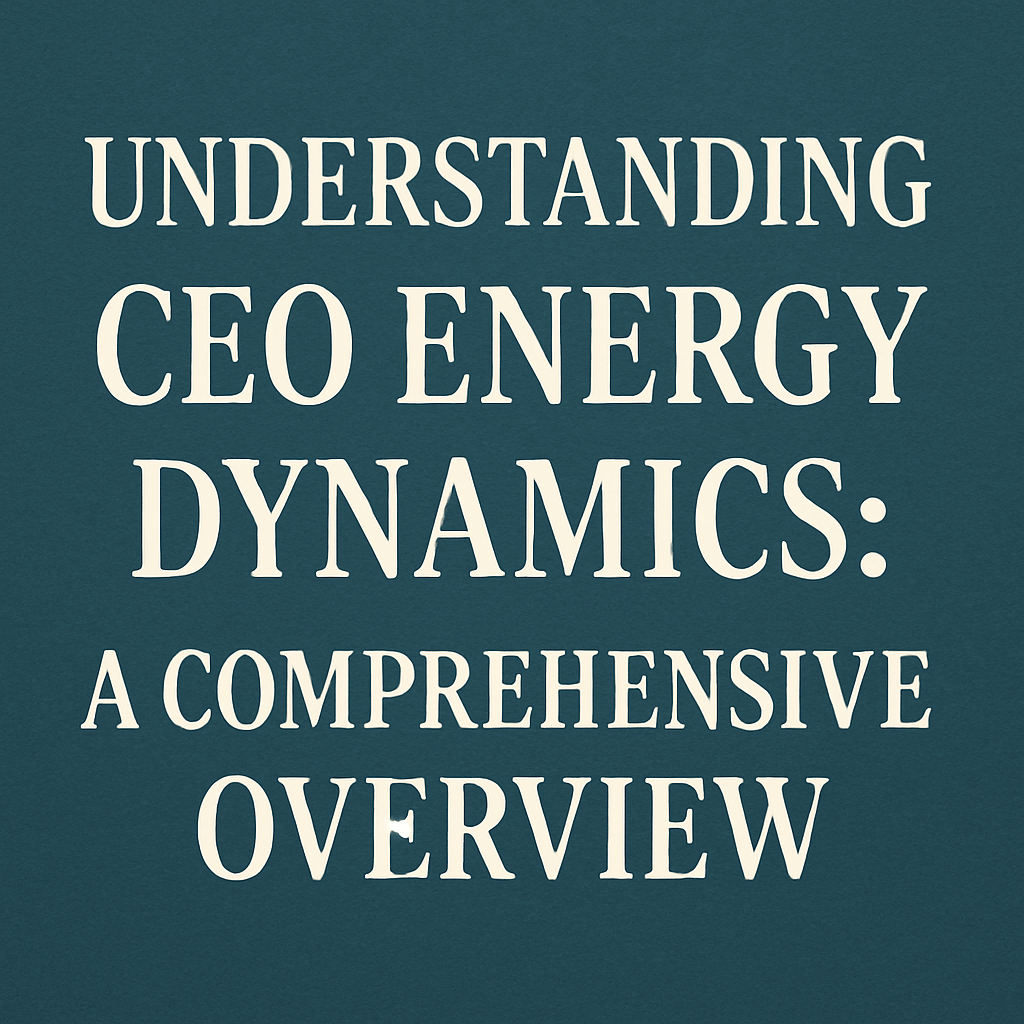Understanding CEO Energy Dynamics: A Comprehensive Overview

Serving as a Chief Executive Officer (CEO) means being the central power source of an organization. This role requires not just stamina, but a unique blend of physical endurance, mental sharpness, emotional resilience, and strategic insight.
The Unique Energy of CEOs
In a recent profile by Fortune on New York Times CEO Meredith Kopit Levien, a key attribute mentioned frequently was her remarkable energy. Colleagues described her as “indefatigable,” managing high levels of energy through operational challenges. Levien herself pointed out the crucial distinction between being naturally energetic and effectively managing that energy over time—an essential trait for sustainable leadership.
The Need for Stamina
During a discussion with Courtney della Cava, who is responsible for CEO selection at Blackstone’s portfolio companies, it became clear that stamina transcends mere hours worked. Instead, stamina is characterized by a leader’s capacity to deliver consistent high performance, grounded in a blend of physical strength, mental fortitude, and emotional intelligence.
The Life of a CEO: A Relentless Demand
The responsibilities of a CEO are oftentimes relentless: early mornings, frequent travel, high-stakes decision-making, and constant context-switching focus on the importance of physical energy as foundational for success. However, what differentiates exceptional leaders is not merely tenacity; it is the discipline to manage their energy strategically.
- Focus on Information Overload: CEOs must maintain clarity while inundated with data.
- Emotional Regulation: They project steadiness, especially during conflict.
- Decision-Making Under Pressure: Making choices swiftly and effectively is crucial.
- Strategic Thinking: Finding time to envision future pathways is essential for growth.
Building Systems for Energy Management
Many executive recruiters emphasize that while some CEOs may possess a natural disposition toward intensity—indicated by quick recovery times and high tolerance for stress—merely having raw energy is insufficient. The most enduring leaders consciously create systems that allow them to manage themselves effectively:
- Minimizing Distractions: Streamlining their environment to focus on what truly matters.
- Utilizing Support Networks: Collective advice from coaches or trusted advisors can enhance decision-making.
- Time Organization: Prioritizing tasks that only the CEO can perform, thus maximizing impact.
In an interview with Fortune, Aflac CEO Dan Amos succinctly noted, “You can only take in so much to your brain. One of the hardest things to do is to stay focused. Don’t let people get you off track.” This encapsulates a vital strategy for maintaining the necessary energy levels to excel.
Nurturing Energy: Innate vs. Cultivated
The debate continues as to whether the energy required for CEO performance is innate or cultivated. Most experts conclude that it is a combination of both. However, sustaining this energy relies not on momentary adrenaline but on structured discipline. While one’s intrinsic drive may guide them to the corner office, it is discipline and structured management that prevent burnout.
Additional Strategies for Sustaining Energy
In further exploration of this topic, we can identify a few additional strategies that CEOs and aspiring leaders might consider for enhancing energy management:
- Mindfulness Practices: Techniques such as meditation can improve focus and emotional regulation.
- Physical Wellness: Regular exercise and proper nutrition play critical roles in maintaining energy levels.
- Boundary Setting: Establishing clear boundaries regarding work hours and commitments can help maintain mental health.
The Bigger Picture
As evidenced by the latest Fortune 500 rankings, which collectively represent two-thirds of the U.S. GDP with over $19.9 trillion in revenues, effective leadership directly correlates with sustained organizational energy. Leadership in companies like Alphabet, which recently surpassed $100 billion in profits, underscores how a CEO’s energy management strategies can vastly influence corporate performance.
The evolving landscape—accelerated by technological advancement and economic volatility—demands not only strong leaders but also energetic ones who can adapt and thrive, marking energy management as a strategic priority for today and beyond.
In conclusion, the energy dynamics of a CEO serve as a powerful reminder that leadership is a marathon, not a sprint, and managing one’s energy wisely can lead to enduring success.
For further insights on the opportunities and challenges facing today’s business leaders, read on at YieldRadar.info.